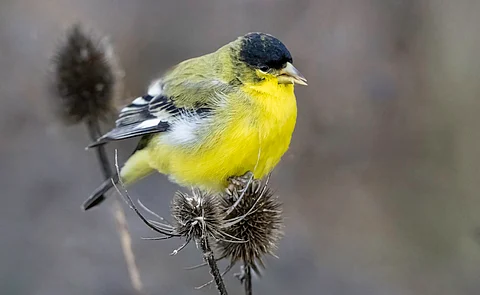

Climate change and habitat changes are making the Lesser Goldfinch, a songbird traditionally found in the southwestern United States to shift to the country’s cooler Pacific Northwest, researchers have found.
The bird has declined in the southern parts of its range (the US Southwest) and is moving northwards making use of rivers.
Lesser Goldfinch populations increased dramatically in Washington (110.5 per cent), Idaho (66.3 per cent), and Oregon (16.9 per cent) between 2012 and 2022, the study found.
Researchers from Washington State University and the Cornell Lab of Ornithology analysed data from birdwatchers participating in two initiatives from the Cornell Lab — Project FeederWatch and eBird — to track the species’ movement, a statement by Cornell University noted.
Rivers emerged as crucial corridors for expansion. “These rivers carry weedy plants and seeds really well,” said Mason Maron, lead author and graduate of Washington State University. “We, as people, like to live along the river, so we disturb the soil and that really creates this sort of chain of the perfect conditions for them.”
Once established in new areas, the goldfinch populations remain stable. “Our results are suggestive of this species being able to pretty rapidly colonize new environments,” said Jordan Boersma, co-author and research associate at the Cornell Lab of Ornithology. “It’s not just that Lesser Goldfinches are exploring these new areas…they are moving in and typically turning into stable populations or even increasing populations.”
However, both Maron and Boresma cautioned against making broad generalisations. While some species can survive environmental change and adapt and do better (like the Lesser Goldfinch), it is not necessarily a trade-off, according to Maron.
According to Boresma, understanding how birds like the Lesser Goldfinch respond to climate change and urbanisation can help predict how other species might also be impacted.
“When we understand how wildlife responds to environmental change, we’re better equipped to make informed decisions about urban planning, conservation, and climate adaptation,” said Maron.